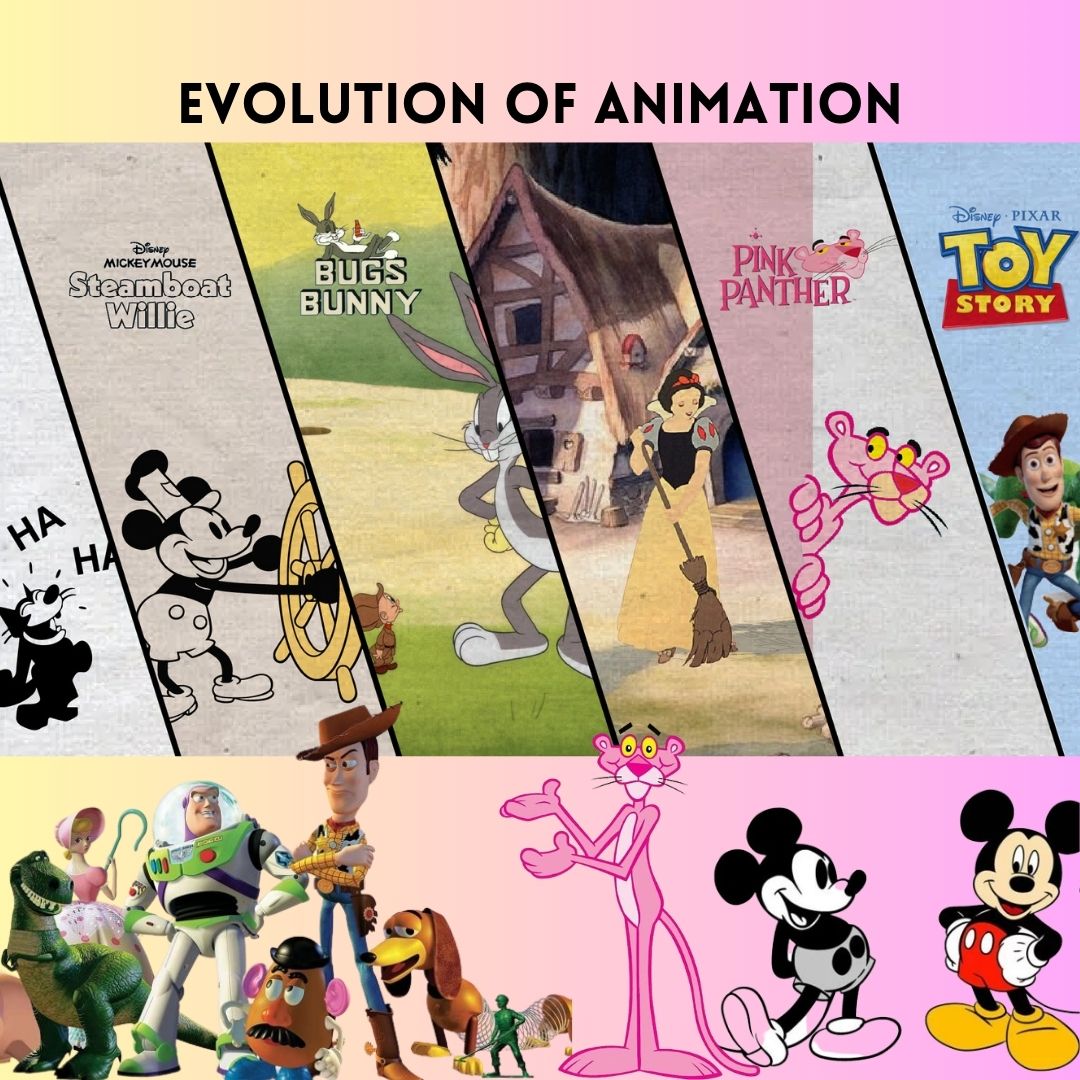The Evolution of Animation Techniques: From Traditional to Digital

Traditional Animation: The Birth of a Medium in the Evolution of Animation
Animation has evolved from hand-drawn animation to the cutting-edge digital techniques that define modern animation. Traditional animation involves creating individual frames by hand, each slightly different from the last, to give the illusion of motion when played in rapid succession.
Cell Animation: Streamlining the Process
As the demand for animated content grew, animators sought ways to streamline the production process. The introduction of cell animation was a game-changer. Moreover, This technique involved drawing characters and backgrounds on transparent sheets (cells) and layering them to create a composite image. Also,This innovation significantly increased efficiency, making animation production more scalable.
Stop-Motion Animation: Bringing Inanimate Objects to Life
While traditional animation flourished, another form of animation was quietly making its mark. Stop-motion animation involves photographing physical objects frame by frame to create the illusion of movement. Popularized by masterful animators like Ray Harryhausen, stop-motion brought creatures like King Kong and the iconic Gumby to the screen, showcasing the versatility of animation techniques.
Introduction of 3D Animation: A New Dimension in the Evolution of Animation
In the late 1990s, 3D animation was introduced with the release of Pixar’s pioneering film “Toy Story”, which showed how computers could be utilized to create whole worlds of animation. Similarly, This new dimension allowed for more realistic characters, and dynamic environments, and opened doors to storytelling possibilities previously unimaginable.
Digital 2D Animation: Merging Tradition with Technology
As technology advanced, the line between traditional and digital animation began to blur. Digital 2D animation emerged, combining the familiarity of hand-drawn techniques with the efficiency of digital tools. Software like Adobe Animate and Toon Boom Harmony allowed animators to create fluid, expressive animations while maintaining the charm of traditional 2D art.
Motion Capture and Performance Animation: Bridging Reality and Fiction
With the advent of motion capture technology, the ability to translate real-world motion into digital characters was introduced to the world of character animation. This technology, which was widely used in films such as ‘Avatar’ and ‘The Lord Of The Rings,’ provided animated characters with an unprecedented level of realism. This innovative technology has found applications across various industries, from film and animation to video games and virtual reality. The ability to capture the subtleties of human movement enables creators to push the boundaries of what is visually possible, bringing characters to life in once unimaginable ways.
Virtual Reality (VR) Animation: Immersive Storytelling
In the current era, the rise of virtual reality has further expanded the horizons of animation. VR animation allows audiences to step inside animated worlds, providing an immersive and interactive experience. Immersive storytelling takes center stage as users become active participants in the animated narrative. Characters and scenes unfold around them, inviting interaction and prompting emotional engagement.
Conclusion:
Animation has come a long way from hand-drawn to digital, demonstrating the combined force of human ingenuity and technical advancement. Our understanding of and interactions with animated storytelling have been shaped by the opportunities and problems that each period has to offer.
The evolution of animation is an ongoing narrative of innovation, creativity, and the relentless pursuit of pushing artistic boundaries. As we reflect on the journey so far, it’s clear that animation will continue to captivate and inspire audiences worldwide, shaping the way we tell stories and express our imagination for years to come.


Recent Comments